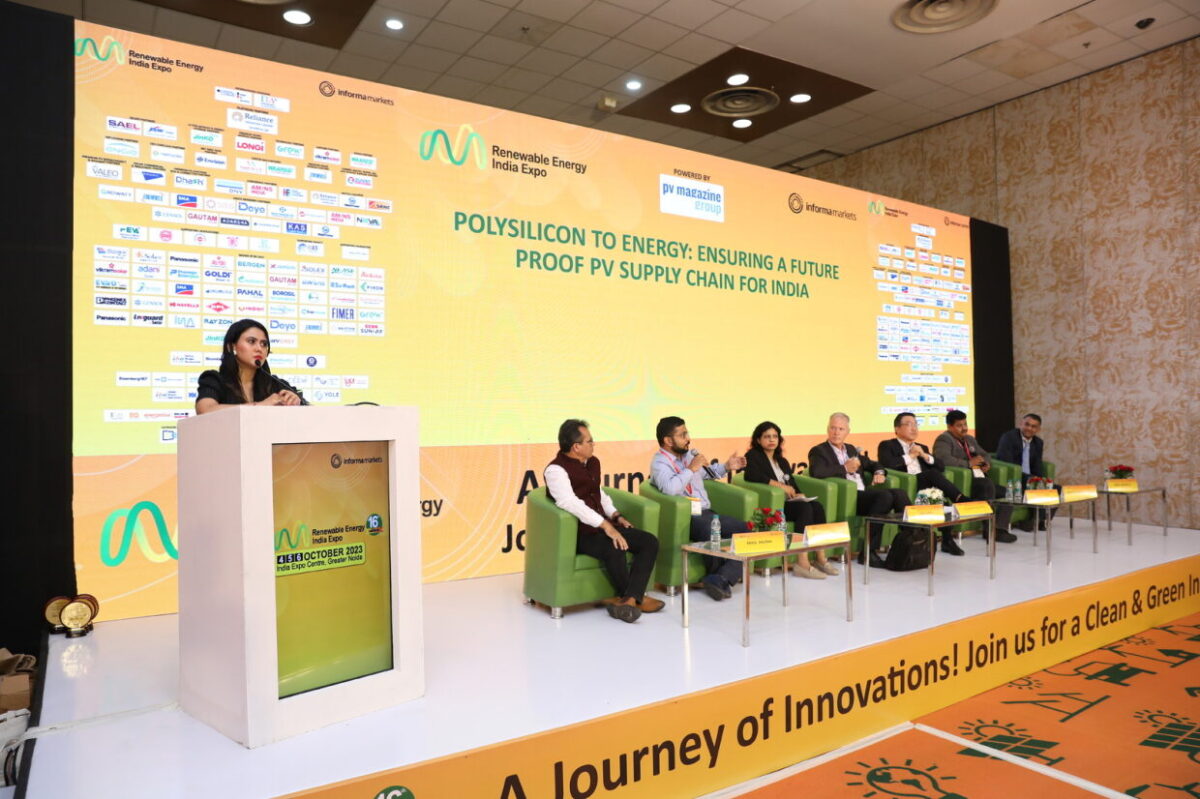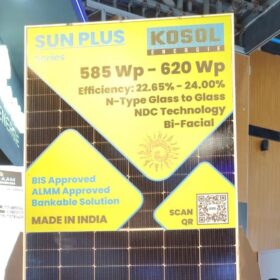A European group of scientists has created a novel hydrophobic antireflective (AR) coating for the cover glass of PV modules.
The double-layer coating uses a silica-titania (SiO2-TiO2) thin film as the bottom layer and an inorganic-organic upper layer made of silica modified with triethoxy(octyl)silane (OTES) as the top layer.
“In this study, a double-layer hydrophobic AR has successfully been fabricated via sol-gel process,” said the researchers. “Sol-gel process has emerged as a promising technique to deposit films due to its various advantages, such as low cost, a wide range of available precursors, low synthesis temperature, and excellent control over the structural and morphological characteristics of the films.”
Firstly, the academics have prepared the SiO2-TiO2 sol, and the OTES-modified SiO2 sol with different molar ratios to control their refractive index. Then, they started the coating process by initially dipping pre-cleaned microscope glass slide substrates in a dip coater with SiO2-TiO2, then putting them to dry and in a heat treatment. For the control of refractive index and film thickness, withdrawal rates were varied. Following that, a similar second dipping process occurred in the OTES-modified SiO2.
“The refractive index and thickness of the double-layer coatings were measured by ellipsometry using a double-layer model,” said the academics. “The refractive index of the bottom layer (SiO2-TiO2 coating) and the top layer (OTES-modified SiO2 coating) were 1.74 and 1.39, respectively, and thicknesses of 77.0 nm and 95.9 nm, respectively,” they said after optimization.
The group then measured the coated glass for transmittance and reflectance spectra in the range of 350 to 800 nm and the close-up of the range of 500 to 600 nm to obtain its optical properties. The best results for the double coating were achieved at 550 nm, where it exhibited a transmittance of 99%, compared to 91% of a reference uncoated glass. It also had a reflectance of 0.15%, compared to 8% for the uncoated glass substrate.
In the following step, the researchers obtained water contact angle (WCA) images to analyze the new coating’s wetting properties. While the uncoated reference glass has a WCA of 56.8 degrees, the coated one had a higher value of 102 degrees. The uncoated glass substrate had surface free energy of 48.5 mN/m, while the coated one had 25.48 mN/m.
“The double-layer AR coating showed a higher WCA and a lower surface free energy, suggesting a less wettable surface,” they explained. “This was attributed to the presence of hydrolytically stable O Si octyl non-polar functional groups on the surface, which can decrease the surface energy and hinder wetting.”
Furthermore, the researchers measured the double-coated glass for durability, exposing it to two years of ambient conditions. According to the results, after that time period it showed minimal changes in transmittance compared to the original values. Also, the adhesion of the novel coating was tested and was found to be “excellent.”
“The results demonstrate that the double-layer coating is a promising solution for reducing reflection and improving the optical properties of glass substrates,” the scientists concluded. “This coating has potential value in various fields, particularly in the solar cell industry, where it can increase the efficiency and stability of solar cells.”
Their findings were presented in “High performance double layer hydrophobic antireflective coatings on glass prepared by sol–gel method,” published in Open Ceramics. The research was carried out by scientists from Slovakia’s Alexander Dubček University of Trenčín and the Joint Glass Centre, as well as Spain’s Institute of Ceramics and Glass.
This content is protected by copyright and may not be reused. If you want to cooperate with us and would like to reuse some of our content, please contact: editors@pv-magazine.com.








By submitting this form you agree to pv magazine using your data for the purposes of publishing your comment.
Your personal data will only be disclosed or otherwise transmitted to third parties for the purposes of spam filtering or if this is necessary for technical maintenance of the website. Any other transfer to third parties will not take place unless this is justified on the basis of applicable data protection regulations or if pv magazine is legally obliged to do so.
You may revoke this consent at any time with effect for the future, in which case your personal data will be deleted immediately. Otherwise, your data will be deleted if pv magazine has processed your request or the purpose of data storage is fulfilled.
Further information on data privacy can be found in our Data Protection Policy.